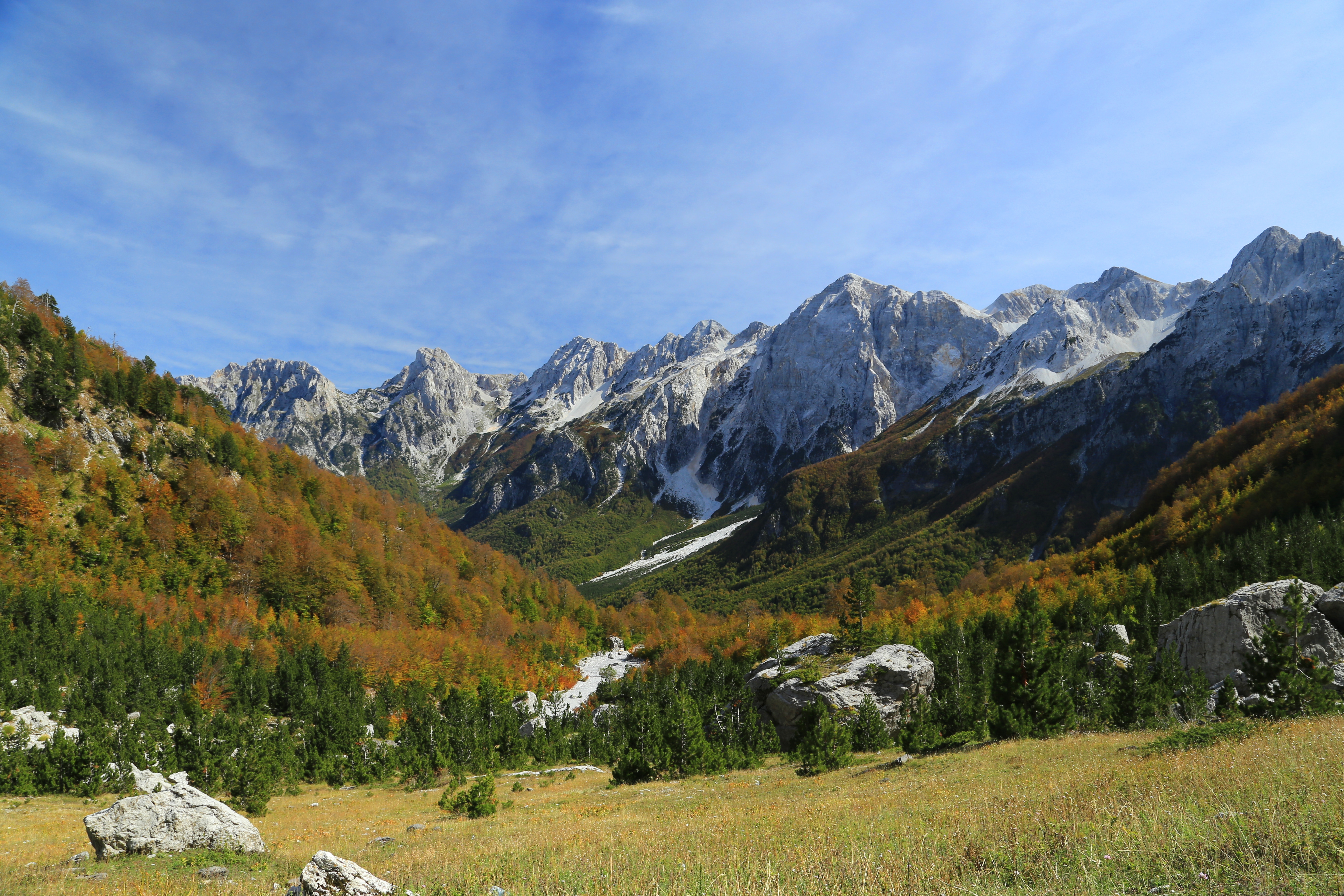|
Gora (region)
Gora (Cyrillic: Гора; ) is a geographical region in southern Kosovo and northeastern Albania, primarily inhabited by the Gorani people. Due to geopolitical circumstances, some of the local Gorani people have over time also self declared themselves as Albanians, Macedonians, Bosniaks, Bulgarians, Serbs, Turks and Muslims (nationality). Gorani inhabited settlements in Albania and Kosovo are synonymous with the geographical outline of Gora as a region. Between 1992 and 1999, the Gora region in Kosovo was designated as a municipality, and its population was 17,574 people according to the 1991 census. Today in Kosovo, the region is part of Dragaš municipality that includes the Albanian inhabited Opoja region. In Albania, the Gora region is located in Kukës County and parts of it are subdivided in the Shishtavec and Zapod territorial units. Nearby, two Gorani settlements geographically located in the Polog region of North Macedonia are ethnographically and linguistically associa ... [...More Info...] [...Related Items...] OR: [Wikipedia] [Google] [Baidu] |
Geographical Region
In geography, regions, otherwise referred to as zones, lands or territories, are areas that are broadly divided by physical characteristics (physical geography), human impact characteristics (human geography), and the interaction of humanity and the environment (environmental geography). Geographic regions and sub-regions are mostly described by their imprecisely defined, and sometimes transitory boundaries, except in human geography, where Jurisdiction (area), jurisdiction areas such as national borders are defined in law. Apart from the Earth, global continental regions, there are also hydrosphere, hydrospheric and atmosphere, atmospheric regions that cover the oceans, and discrete climates above the land mass, land and water mass, water masses of the planet. The land and water global regions are divided into subregions geographically bounded by large geological features that influence large-scale ecologies, such as plains and features. As a way of describing spatial areas, the ... [...More Info...] [...Related Items...] OR: [Wikipedia] [Google] [Baidu] |
Kukës County
Kukës County (; sq, Qarku i Kukësit) is a landlocked county in northeastern Albania, with the capital in Kukës. The county spans and had a total population of 74,388 people as of 2021. The county borders on the counties of Dibër, Lezhë and Shkodër and the countries of Montenegro, Kosovo and North Macedonia. It is divided into three municipalities: Has, Kukës and Tropojë. The municipalities are further subdivided into 290 towns and villages in total. The human presence in the lands of modern Kukës County can be traced back to the Bronze Ages, when ancient Illyrians, Dardanians and Romans established settlements in the region. Several Illyrian tombs were discovered in the villages of Këneta and Kolsh close to Kukës. Kukës is predominantly mountainous and framed by mountain ranges including the Albanian Alps in the northwest which is typified by karst topography. The northeast is dominated by the mountains of Gjallica, Koritnik and Pashtrik, while the southeaste ... [...More Info...] [...Related Items...] OR: [Wikipedia] [Google] [Baidu] |
Upper Reka
Upper Reka ( mk, Горна Река, Gorna Reka; ), meaning "Upper river", is a geographic and ethnographic subregion of the broader Reka region of western North Macedonia, including settlements within the upper left portion of the Municipality of Mavrovo and Rostuša and of Gostivar Municipality. The region is home to both a Muslim Albanian community and Christian Orthodox population that self identifies as Macedonians, though with some notable exceptions in past and recent times. Upper Reka is an alpine mountainous and rugged region with animal grazing and highland pastures. In contemporary times, the largest inhabited settlement is the village of Vrbjani. Upper Reka is an isolated and underdeveloped region with limited communication links, whereby access and travel becomes difficult during the snowy winter months. Historically Upper Reka inhabitants mainly engaged with agricultural and farming activities of which some of the remaining population continues to do. The regio ... [...More Info...] [...Related Items...] OR: [Wikipedia] [Google] [Baidu] |
Lumë (region)
Lumë ( sq-definite, Luma, literally "river") is a region that extends itself in northeastern Albania and southwest Kosovo whose territory is synonymous with the historic Albanian tribe (''fis'') of the same name. It includes the village with the same name, Lumë, which is located in Albania. Luma is surrounded by Has region (north and northwest), Fan and Orosh (west), Reçi and M’Ujë e m’Uja (south west), Upper Reka (south east), Gora (east), Opoja and Vërrini of Prizren (north east). The region itself also includes the small Arrëni tribe in the west and the Morina tribe in the east. Only a small portion of the region, half of historic Tërthorë bajrak (tribal banner), is situated within the borders of Kosovo, from Prizren city to the border between Kosovo and Albania. During the Balkan wars (1912-1913), Serb military forces attempting to assert their control of the region entered Luma and attacked local inhabitants, killed tribal chieftains, removed livestock belon ... [...More Info...] [...Related Items...] OR: [Wikipedia] [Google] [Baidu] |
Republic Of North Macedonia
North Macedonia, ; sq, Maqedonia e Veriut, (Macedonia before February 2019), officially the Republic of North Macedonia,, is a country in Southeast Europe. It gained independence in 1991 as one of the successor states of Yugoslavia. It is a landlocked country bordering Kosovo to the northwest, Serbia to the north, Bulgaria to the east, Greece to the south, and Albania to the west. It constitutes approximately the northern third of the larger geographical region of Macedonia. Skopje, the capital and largest city, is home to a quarter of the country's 1.83 million people. The majority of the residents are ethnic Macedonians, a South Slavic people. Albanians form a significant minority at around 25%, followed by Turks, Romani, Serbs, Bosniaks, Aromanians and a few other minorities. The region's history begins with the kingdom of Paeonia, a mixed Thraco- Illyrian polity. In the late sixth century BC, the area was subjugated by the Persian Achaemenid Empire, then inco ... [...More Info...] [...Related Items...] OR: [Wikipedia] [Google] [Baidu] |
